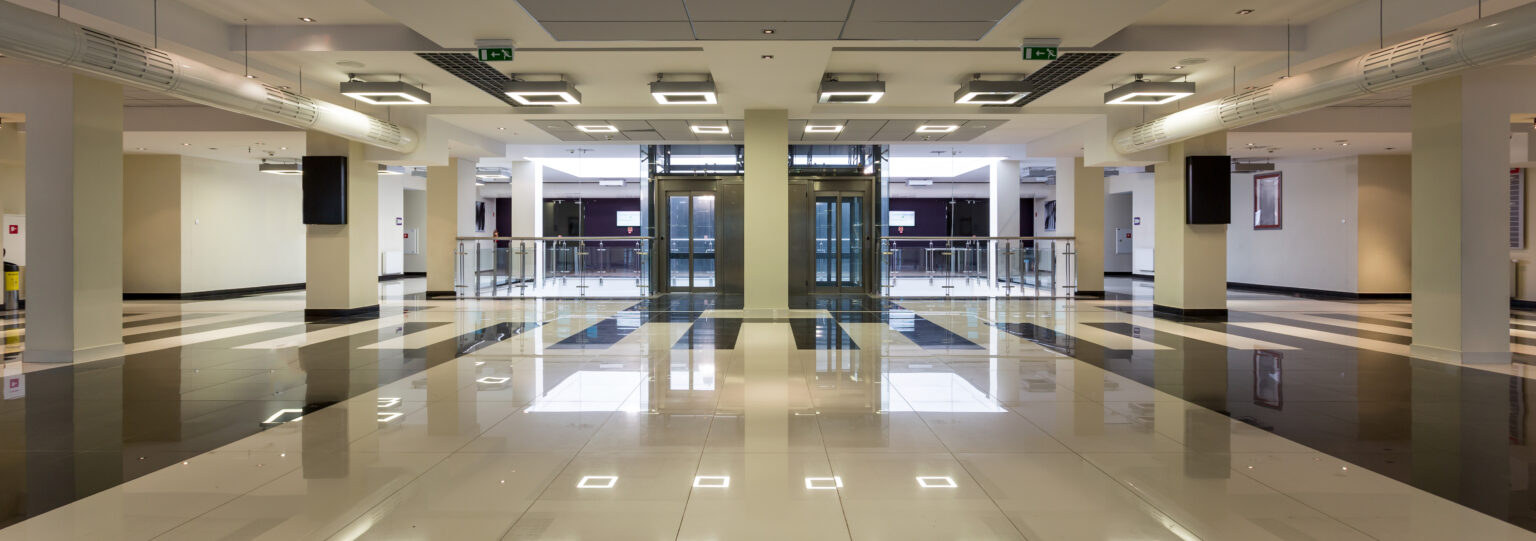
Care and Maintenance of Natural Stone Floors
The most damaging materials to stone floors are sand, dirt and miscellaneous grit. For those in colder climates, the problem is exacerbated by the addition of granular ice melt to keep pedestrians safe from slips and falls.
How best to care for your lobbies and entranceways?
The most effective way to keep a stone floor looking new and extend the time between professional restorations is regular use of a dust mop. Use a dry, clean, non-treated dust mop at least two times a day in high traffic areas and you’ll be pleased with the results.
Walk off mats placed outside and inside an entrance will eliminate a good portion of sand, dirt and grit. Vacuum these mats daily and periodically clean debris from under the mats as the debris acts as sandpaper.
Polished marble should be cleaned daily in high traffic areas using a clean rayon or cotton string mop and cold-to-warm water that contains a quality neutral pH cleaner. Acidic and alkaline cleaners should not be used, as they will dull the polish on the floor.
Dry buffing with a white pad under a rotary floor machine with a speed of 175 RPM or greater will extend the just-polished look of a quality marble floor.
Contact Us
Contact Stuart Dean today for a floor inspection or to ask care questions about your floors. We will get your stone floors in the best possible shape for the coming winter. Regular floor maintenance service from Stuart Dean will keep your stone floors shining all year long.
*Three terms that apply to chemicals used in cleaning are: acid, alkaline, or neutral. The pH scale ranges from 1 to 14 and is a measure of a solution’s acidity or alkalinity. A pH of 7 is neutral; a pH less than 7 is acidic; and a pH greater than 7 is alkaline, or basic.
